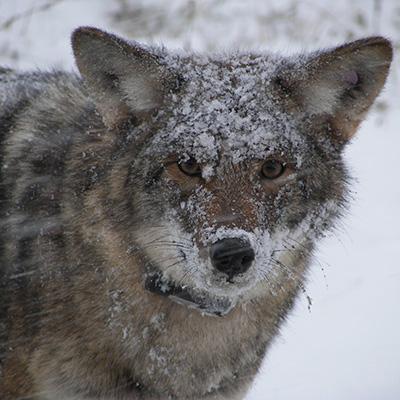Evolving Niche of the “Coy-Wolf” in Northeastern Forests and Implications for Biodiversity

Coyotes began colonizing the Northeast in the 1920s and are the most abundant large carnivore in the region today. NSRC researchers conducted a study in the Adirondacks of New York State to determine if coyotes are “deer specialists,” thereby filling the vacant niche of the wolf. They also documented how much coyote diets overlap with those of native carnivores. Using coyote scat collections and data from past studies, researchers constructed a timeline of coyote diet from the 1950s to today and related coyote use of prey to changes in prey abundance. They documented dietary overlap among coyote, bobcat, gray fox, and red fox using stable isotope analysis.
They discovered that, despite high use of deer, coyotes are not deer specialists and are not filling the niche of the wolf. Rather, deer use depends on the abundance of primary prey, specifically snowshoe hare (historically) and beaver (currently). As coyotes increasingly exploit beaver populations, researchers expect use of adult deer to continue to decline. However, use of fawns remained constant despite primary prey availability, so if coyote numbers increase as a result of abundant beaver populations, total predation on fawns may increase too.
Native carnivores appear sufficiently flexible to achieve a stable coexistence with coyotes. Coyote, gray fox, and red fox diets largely overlap, but fox coexist with coyotes by exploiting predation refuges – gray fox by climbing trees and red fox by occupying human-dominated areas. However, red fox use of human development may become problematic if it leads to increased human-wildlife conflict.
